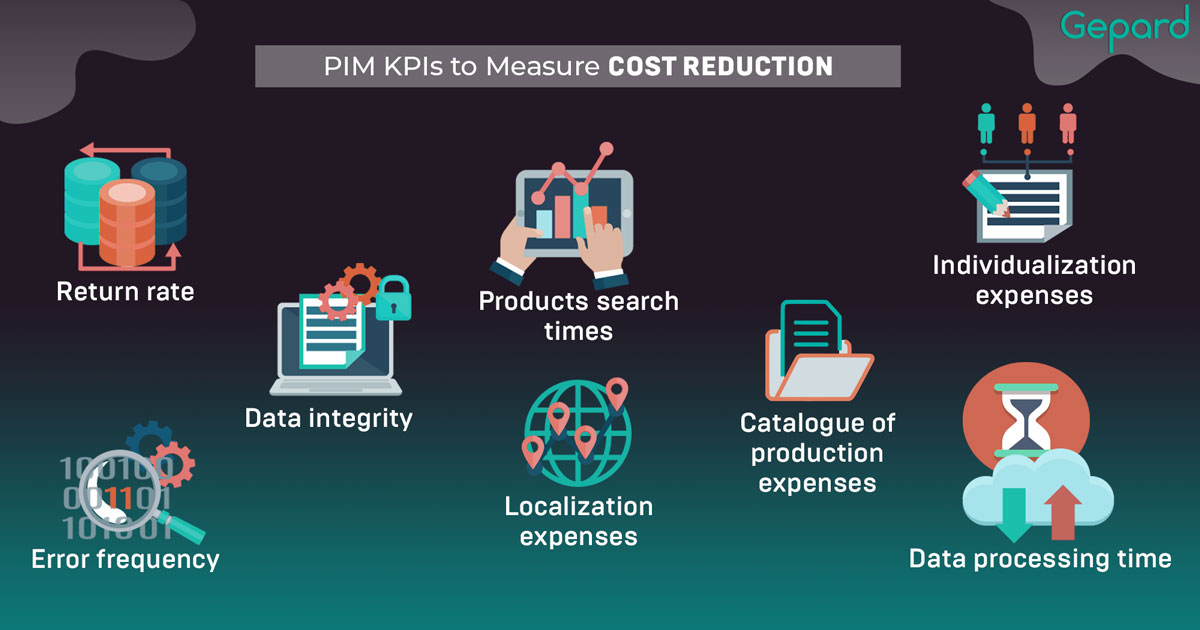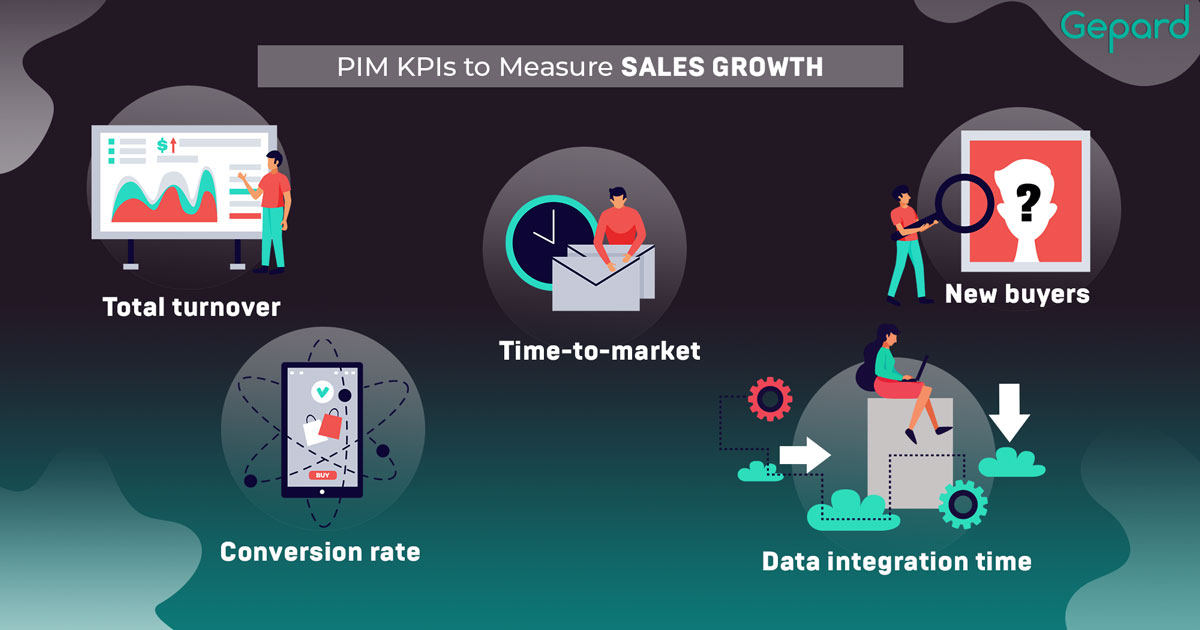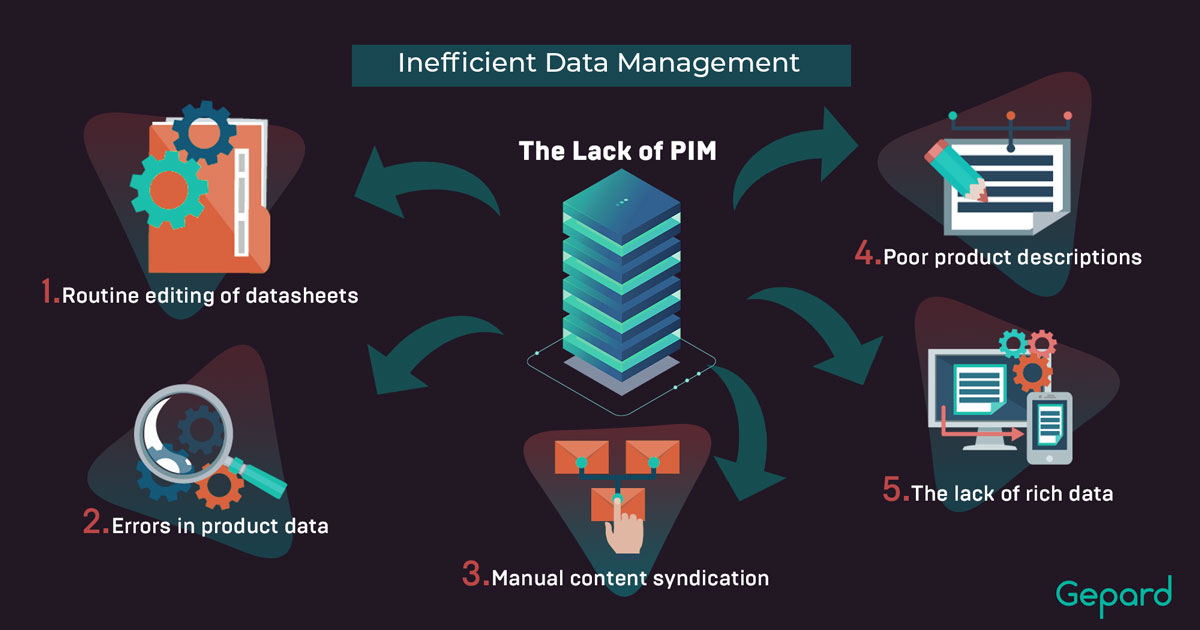PIM ROI: How To Calculate?
For manufacturers, selling massive amounts of products on multiple eCommerce platforms, managing all the product information is quite a challenge. Implementing a PIM system helps businesses to succeed in a competitive data-driven world. PIM means product information management and serves as a single repository to collect, manage, and distribute product data across various sales channels.
Before you move forward with investing in a PIM system, it makes sense to determine PIM ROI and learn how to reach measurable success.
What is PIM ROI?
How to Calculate PIM ROI?
As with any new business technology, before implementing PIM, you’ll want to know if the return on investment (ROI) of a PIM system is worthwhile. ROI on a PIM implementation has two sides: quantitative and qualitative.

Quantitative PIM ROI:
- PIM solution increases the number of selling days. With a faster time-to-market, your company trades more products.
- PIM reduces the rate of returns. With a PIM solution, your return rates get reduced. The same goes for fines, penalties, and chargebacks. In such a way, you minimize the costly effects of returns on your business.
- PIM software boosts productivity. With data governance, the information is validated before being sent to eCommerce platforms. The manual errors are eliminated, which helps you launch new products faster and beat the competitors.
- PIM improves conversion rates. With the right and compelling product information, there are more chances for increased purchases, as accurate product data facilitates the buying process.
Qualitative ROI of PIM:
- PIM software improves customer experience. The information becomes more personalized, and scalable product data results in an excellent customer experience and helps to build brand loyalty.
- Implementing a PIM solution improves data quality. PIM digital tools create a gathering point where all the website data and syndication flows. It ensures data accuracy and consistency.
- PIM makes product content more compelling. With the help of rich data, your content stands out and makes you outshine your competitors.
- PIM software maximizes efficiency and improves operation processes within an organization. PIM streamlines a company’s internal communication and guarantees greater productivity with less manual work.
General Guide on How to Measure Performance and Results of PIM
Before launching a PIM system, it is crucial to come up with a business value model to foresee how it can increase your revenue, lower business expenses, and optimize business processes.
Your PIM vendor or implementation company can help you create a list of key performance indicators (KPIs) to measure ROI on a PIM implementation for your company after conducting an in-depth analysis of your business needs.
Some of them help determine sales and growth success, while others are better suited for measuring cost savings.
PIM KPIs to measure cost reduction:
- Return rate. While determining the return rate, pay attention to what percentage of products were returned due to bad product data (e.g. low quality or incomplete product data, inaccurate product description, and so on).
- Data integrity. Evaluating the consistency of your data makes you understand what product data has to be enriched, to meet quality and completeness requirements, which helps in making purchase decisions.
- Error frequency. A proven indicator of PIM ROI that illustrates how PIM can eliminate manual mistakes, and save time and the costs of debugging.
- Products search times. PIM offers improved search capabilities and lets you add attributes for advanced search. It enables potential customers to find the right product faster and make the purchase.
- Catalogue of production expenses. Implementing PIM makes product enrichment much faster and more affordable. By controlling product data processes, PIM accelerates the speed of product catalog development.
- Localization expenses. PIM localizes your global product data for required markets, and ensures faster time-to-market and more sales volume. You reach your global audience and cut down localization expenses.
- Individualization expenses. One of the many PIM benefits, it helps you address your target audiences individually by creating personalized product content.
- Data processing time. Numerous supported data formats and smooth data import & export inside the PIM system decrease data processing time, which reduces business expenses.

PIM KPIs to measure sales growth:
- Total turnover. Total sales are one of the key indicators of ROI PIM that helps you observe if your business is steadily or rapidly growing after PIM implementation.
- Conversion rate. More accurate and high-quality data, and complete product descriptions significantly increase product experience, which drives more conversions. If you are operating on multiple channels, you can measure each channel’s conversion rate and observe their improvements.
- Time-to-market. This KPI is crucial to measure the product management ROI. It includes two main steps: determine how often your team can add new products to the catalogue and how often you can automatically update product data. PIM-automated processes help you increase performance and speed up time-to-market.
- New buyers. Distributing product data to multiple sales platforms and local markets with PIM software helps you reach more new potential customers, which enhances PIM ROI and increases business growth.
- Data integration time. PIM automates a huge number of routine, usually manual tasks, which significantly lowers product data integration time.

Inefficient Product Data Management: The Lack of PIM
Not implementing a PIM solution results in time-wasting and disorganized product data management. Here are the problems your company might face:
1. Time-consuming management of datasheets
Managing product data sheets manually is only good for small amounts of data. Handling huge amounts of product data sheets manually takes a lot of time. Your team can use this time for more creative tasks.
One of the benefits of PIM software is the opportunity to create and manage datasheets quickly and without extra effort.
2. Errors in product data
Managing product information manually creates a high risk of data errors. It results in poor customer experience and increased returns. Identifying and correcting data errors manually also leads to delays in product launches.
Other PIM benefits are the capability to eliminate manual data errors, spotlight incomplete product information, and validate product data. As a result, with implementing PIM return rates in your company are reduced or minimized.
 3. Manual content syndication
3. Manual content syndication
If the product content syndication (distribution of product data across multiple sales platforms) in your company is done manually, you can face several challenges. For example, it can be challenging to conform to multiple channels’ formats and requirements, especially if they are ever-changing.
A PIM solution enables you to distribute product data feeds automatically across various sales touchpoints, while complying with their respective requirements.
4. Poor product descriptions and lack of rich data
Manual product information management usually brings the bad quality of product descriptions and a shortage of rich data. The supplier-provided content is not something that differentiates your business. PIM software lets you create rich product content and an eye-catching product description that makes your business stand out in a crowd.
Among PIM’s benefits are its numerous digital assets features that help you to enrich product data with unique text descriptions and product reviews, high-quality images and video guides for use, and multiple product specifications, which gives you more chances to sell the product.
Also, you can define specific rules that guarantee that your products meet rich content standards before being launched on multiple eCommerce platforms.
PIM solution fits all-size businesses, manufacturers, online retailers, product managers, and marketers who want to stay omnichannel and deliver compelling product experiences.
PIM System: Outcomes and Benefits
The hidden value of PIM is in expenses that seem to be not always related to product data. Many businesses understand they have product data quality issues that make them miss sales. Yet they do not always comprehend how it keeps happening.
Here is where a PIM solution comes to the rescue. It enhances the reliability and quality of your products, facilitates sales, and improves your brand reputation. PIM lowers the need for resources, reduces production time, and boosts operational efficiency. It all results in cost savings for the business.
You can read more in our recent case studies about how our clients have optimized their eCommerce performance by using a PIM system.
PIM Implementation With Gepard
Ready to automate your product information management and bring it to the next level? Our dedicated Gepard team is here to help you with implementing a PIM system for your business. A group of 150+ highly experienced developers and marketers has been providing eCommerce solutions to the major retail players in the EMEA market for over 15 years.
Gepard PIM & Syndication system improves operational efficiency by 75%, and 120+ million products are pushed automatically to multiple sales platforms monthly. It helps you keep all your rich data in a single place, smoothly cooperate with your team members, and easily connect new eCommerce platforms.
Do not let your business miss out on sales because of bad product data – just consult with Gepard about PIM implementation.


